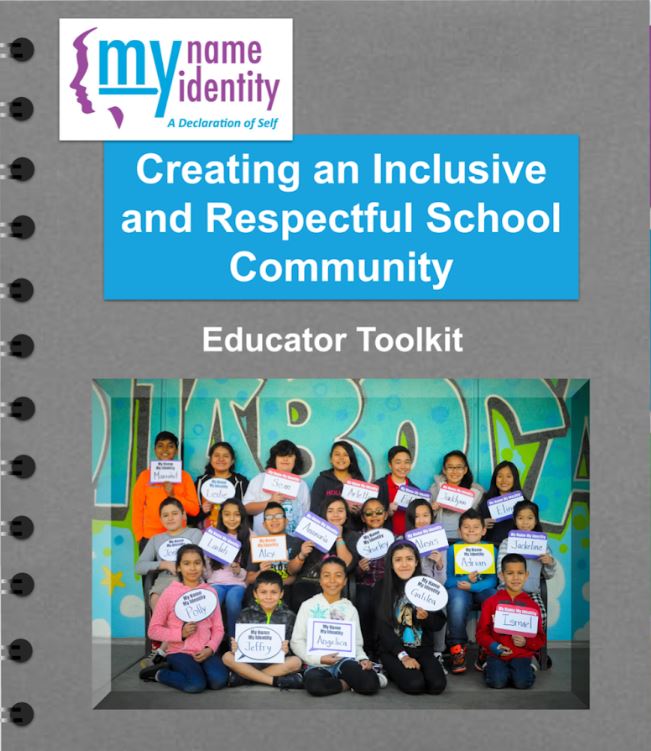
Educators know that making students feel valued and respected is critical to children and youth learning and achieving to their fullest potential. Honoring — and correctly pronouncing — students’ names is an important first step for everyone to have a sense of belonging and being seen. It also goes a long way to strengthening educators’ bonds with individual students.
The diversity in California and in our schools means students bring their rich languages, cultures and traditions to the school community. This includes their names, of course. “A person’s name is part of their cultural identity,” Rita Kohli, assistant professor at the Graduate School of Education at the University of California, Riverside, said in a 2021 NEA article. Failure to recognize this can cut deep in the classroom. In 2012, Kohli co-authored a paper titled “Teachers, Learn Our Names! Microaggressions and the K-12 Classroom.” She and colleague Daniel Solórzano interviewed 41 students of color in K-12 schools and found that the failure to pronounce a name correctly can negatively impact the worldview and social-emotional well-being of students.
“When the child enters school and teachers — consciously or not — mispronounce, disregard or change the name, they are in a sense disregarding the family and culture of the students as well,” Kohli and Solórzano wrote. “The consequences of these subtle racial experiences are real and can have a lasting impact on the wellbeing and self-perceptions of youth.”
Strategies to consider
What are the best ways educators can learn students’ names and convey the story and meaning behind a name or culture to the rest of the class?
- Teachers can make concerted efforts to learn pronunciation of names — and own it when they experience difficulties. Students appreciate the effort to get it right. In a 2018 EdWeek article, students talked about feeling embarrassed or invisible when teachers didn’t try to pronounce their names correctly. Some even felt pressure to change their pronunciation so teachers could say their names easier. CTA polled members several years ago on how they taught themselves to pronounce their students’ names Tellingly, 81 percent of respondents say they experienced their own names being mispronounced.
- The “My Name, My Identity” campaign, launched in 2016 by the Santa Clara County Office of Education in partnership with the National Association for Bilingual Education, encourages children and youth to feel a sense of pride about their name and patiently correct people who mispronounce it.
 The campaign is also for all students and educators to understand the importance of honoring their peers’ identities by learning to pronounce their names correctly — and learning the stories behind the names. Engaging in these activities will help cultivate an inclusive learning environment.
The campaign is also for all students and educators to understand the importance of honoring their peers’ identities by learning to pronounce their names correctly — and learning the stories behind the names. Engaging in these activities will help cultivate an inclusive learning environment.
The campaign offers a comprehensive toolkit and multiple resources for classroom educators. It asks educators to take the pledge to respect student names.
- Before school starts, educators can also call parents or check in with a student’s previous teacher on the correction pronunciation of a name.
Getting It Right, a publication from the Regional Education Laboratory Northwest, offers information on naming conventions in 11 languages, including Arabic, Chinese, Hindi, Korean, Russian, Somali, Spanish, Tagalog, Ukrainian, Urdu and Vietnamese.
Learning about each other and valuing each other’s backgrounds and cultures — including our names — is key to an inclusive, thriving classroom and school.
Call Them by Their Names
CTA asked members how they learned to pronounce students names. Popular responses:
- “Spell it phonetically.”
- “Ask your students! They appreciate it.”
- “At the beginning of the year, I have them sit in pairs and it helps me remember their names by association.”
- “Keep trying!”
- “Sit them in alphabetical order the first month.”
- “The ‘About Me’ profiles I create include: Legal Name, Preferred Name with Phonetic Spelling. I use name tags too.”
- “For the first month, I have students say their names before speaking.”
- “Repeating their names over and over again in front of the class shows that teachers have things to learn too!”
The Discussion 0 comments Post a Comment